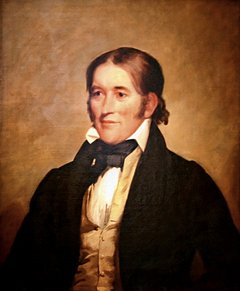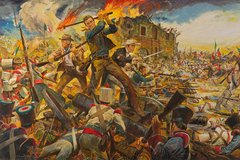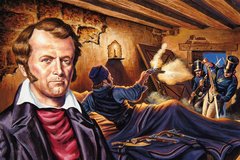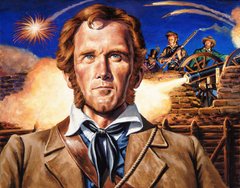Dr. R. Bruce Winders, Former Alamo Director of History and Curator
David Crockett easily remains one of the most popular figures associated with the Alamo. So important is he to the story that a persistent misconception contends that he was the commander of a contingent known as the “Tennessee Mounted Volunteers” who followed him from their home state to Texas. In reality, Crockett came to Texas accompanied by a few friends and a nephew[1], reportedly vowing to be content to serve Texas in the role of a “high private.” In early January 1836 Crockett, enlisted as a private in the Volunteer Auxiliary Corps for a term of six months, prepared to march off to Matamoros as part of Johnson’s and Grant’s ill-fated expedition. It was clear, however, that he hoped to revive his political fortunes, telling his family that he hoped to be elected a delegate to serve at the upcoming constitutional convention to be held at Washington-on-the-Brazos. Failing in that endeavor due to questions over his eligibility, he was sent off to San Antonio de Béxar. Arriving there around February 8, Crockett became a member of Captain William B. Harrison’s volunteer company. However, his status as a former Congressman and colonel of Tennessee militia guaranteed that his fellow volunteers accorded him a special place in the garrison.




